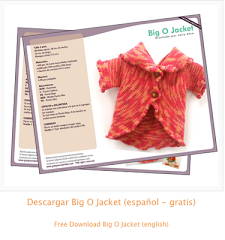Ribbing is a elasticity border that is commonly used on the cuffs of sweaters or on the top of socks. The rib stitch consists of columns of knit stitches alternating with columns of purl stitches.
The knit columns stand out at the front and the purl columns sink to the back. Such ribbing looks the same on both sides and is useful for garments such as scarves.
Ribbing has a strong tendency to contract laterally, when you lay a piece of ribbing flat, you will only see the knit columns as they pull together and cover the purl columns. This means that ribbing is very elastic; you can pull it out horizontally and it will spring back.
Ribbing can be done with any number of stitches, but the most common ribbing combinations are those the rib uses the same number of knitted versus purl columns.
The elasticity of the final ribbed fabric is affected by:
- Column width, the narrower the column of stitches, the more elastic the ribbing.
- Needle size, bigger needles result in less elasticity. Ribs are usually worked on needles one sizes smaller than the ones used for the body of the project.
. 1x1 Rib:
For this single rib, cast on an odd number of stitches.
Row 1: (RS) Knit 1, *purl 1, knit 1,* rep from * to end of the row.
Row 2: (WS) Purl 1, * knit 1, purl 1,* rep from * to end of the row. (Or the instruction may be: Knit the knit stitches and Purl the purl stitches.)
Repeat these 2 rows form pattern.

. 2x2 Rib:
You need a multiple of 4 stitches plus 2 (that is 18, 22, 26, and so on).
Row 1: (RS) Knit 2, *purl 2, knit 2,* rep from * to end of the row.
Row 2: (WS) Purl 2, * knit 2, purl 2,* rep from * to end of the row.
These 2 rows form pattern. . 2x1 Rib:
. 2x1 Rib:
Row 1: (RS) Knit 2, *purl 1, knit 2,* rep from * to end of the row.
Row 2: (WS) Purl 2, * knit 1, purl 2,* rep from * to end of the row.
These 2 rows form pattern.




0 comentarios:
Publicar un comentario en la entrada